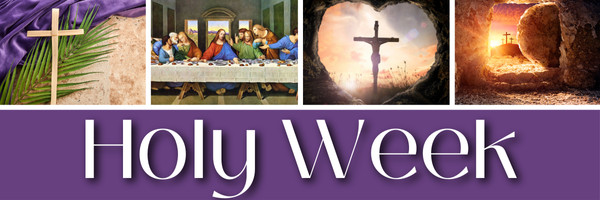We ask you, urgently: don't scroll past this
Dear readers, Catholic Online was de-platformed by Shopify for our pro-life beliefs. They shut down our Catholic Online, Catholic Online School, Prayer Candles, and Catholic Online Learning Resources essential faith tools serving over 1.4 million students and millions of families worldwide. Our founders, now in their 70's, just gave their entire life savings to protect this mission. But fewer than 2% of readers donate. If everyone gave just $5, the cost of a coffee, we could rebuild stronger and keep Catholic education free for all. Stand with us in faith. Thank you.Help Now >
Lex Orandi, Lex Credendi, Lex Vivendi. As we Worship, So we Believe, So we Live
FREE Catholic Classes
Liturgical worship is not an "add on" for a Catholic Christian. It is the foundation of Catholic identity; expressing our highest purpose.Worship reveals what we truly believe and how we view ourselves in relationship to God, one another and the world into which we are sent to carry forward the redemptive mission of Jesus Christ. How the Church worships is a prophetic witness to the truth of what she professes. Good worship becomes a dynamic means of drawing the entire human community into the fullness of life in Jesus Christ. It attracts - through beauty to Beauty.
Highlights
Catholic Online (https://www.catholic.org)
11/8/2010 (1 decade ago)
Published in Living Faith
Keywords: Holy Mass, Eucharist, Sacrifice, Worship, Priesthood, Holy Communion, Liturgy, Divine Liturgy
P>CHESAPEAKE, VA. (Catholic Online) - There is a Latin maxim that addresses the centrality of worship in the life, identity and mission of the Catholic Church; "Lex Orandi, Lex Credendi". The phrase in Latin literally means the law of prayer ("the way we worship") is the law of belief ("what we believe"). It is sometimes expanded to as, "lex orandi, lex credendi, lex vivendi", further deepening the implications of this truth - how we worship reflects what we believe and determines how we will live.
The Church has long understood that part of her role as mother and teacher is to watch over worship, for the sake of the faithful and in obedience to the God whom she serves. How we worship not only reveals and guards what we believe but guides us in how we live our Christian faith and fulfill our Christian mission in the world by manifesting the continuing presence of the Risen Jesus Christ.
Liturgical worship is not an "add on" for a Catholic Christian. It is the foundation of Catholic identity; expressing our highest purpose. Worship reveals what we truly believe and how we view ourselves in relationship to God, one another and the world into which we are sent to carry forward the redemptive mission of Jesus Christ.
How the Church worships is a prophetic witness to the truth of what she professes. Good worship becomes a dynamic means of drawing the entire human community into the fullness of life in Jesus Christ. It attracts - through beauty to Beauty. Liturgical worship informs and transforms both the person and the worshipping community which participates in it. There is reciprocity between worship and life.
I have spent decades in ecumenical work. Perhaps that explains why I find it odd that right when so many of our Christian friends in other confessions and communities are searching for a deeper encounter with the beauty of the Lord in formal worship; for sign, symbol and mystery, for a connection with the ancient Church in her divine worship, some parts of the Catholic Church are discarding the very treasures that make her formal liturgical worship so beautiful, full of mystery and so compelling and attractive to those seeking a deeper experience of worship and Christian life.
Sadly, what may have begun as a sincere effort to simplify, itself an invitation into beauty when properly achieved, often devolved into a form of liturgical minimalism. The liturgical minimalism I speak of begins when you enter what is sometimes called the "worship space" of some contemporary church buildings. There are very few symbols anywhere. There are few if any icons or images reflecting the heavenly touching the earth, drawing one into a transcendent encounter with the God who we receive and in whom we are invited to live and move and have our being.
On Sundays, before Holy Mass begins, this "worship space" is often filled with people conversing about the week - no screaming mind you, or irreverance, but little that sets it apart as the place where God Incarnate, Jesus, the Second person of the Most Holy Trinity, will manifest Himself and give Himself away, body, blood, soul and divinity, to we who are mere mortals invited into His throne room. The tabernacle, which in times past invited genuflection of both body and spirit in preparation for the Holy Sacrifice of the Mass, is now more often in a separate small nondescript room outside of the "worship space". Silence, which invites interior preparation, is hard to find.
I am not a "traditionalist" Catholic, although I understand and respect those who are. I am just a Christian who chooses to live my faith in its fullness, as a Catholic. I am a "revert", drawn back to that fullness of Christianity that is dynamic, orthodox, faithful Catholic life and practice. I have the utmost respect for my brethren who are Protestants in each of their various confessions and communities. However, I am not one, by choice. I do not want a Protestant looking church building or a stripped down Catholicism whose worship seems more protestant than Catholic. I do not want barren liturgy and symbol-less Catholicism.
Over the last two decades, some who purported to be liturgical experts too often stripped away the richness and the depth that draws so many to the treasure that is Catholic worship and life. Their numbers and influence are dwindling. The Catholic seminaries that are full (and their number is increasing) are filled with candidates who want the vibrant, symbolic, faithful, richly liturgical, devout fullness of Catholic faith and life.The movement toward dynamic, symbolic and beautiful Liturgy is not about going "backward" but forward and toward eternal worship.
The ecclesial movements are flourishing, drawing men and women who also want the fullness of Catholic worship, faith and life in all of its rich beauty. The new Catholics, coming into full communion from other Christian communities, are flocking to the "dynamically orthodox" and faithful Catholic parishes. The symbols are coming back into our sanctuaries and new ones are emerging.
There was a movement called Iconoclasm ("Image-breaking") in the eighth and ninth centuries in the Eastern Church. It became a full scale heresy. The term has come to be associated with those who rejected icons, but it speaks to a contemporary problem, liturgical minimalism and the loss of the sense of the Sacred in our Churches. Icons are meant to put us in touch with the transcendent mysteries of our faith.
I pray with icons and have for many years. I cherish their liturgical role in the Eastern Church. In fact, one would never find an Eastern Church, Catholic or Orthodox, without icons. The contemporary "iconoclasts" are those who seek to de-mystify Christian faith, life, worship and practice. They are not the future of the Catholic Church but the past.
There are some who seem to think that the symbols of our worship, our faith and our life are a problem. While they strip our sanctuaries and make our liturgical experiences barren, they think they have helped us by somehow making the faith more 'relevant", "meaningful" or "contemporary". They are sadly mistaken and have done the Church and her mission a disservice.
They fail to grasp that, by nature and grace, human persons are symbolic. Man (and woman) is created in the image of God, and is a divine icon. Jesus Christ is the Icon of the Father. Symbols touch us at a much deeper level than words or emotive or affective participation can. They touch us at the level where authentic religion and deep worship truly begins. It is there where we hunger the most for God.
On April 15, 2010, Pope Benedict XVI addressed the Bishops of Brazil in Rome. He told them that the Eucharist constitutes "the centre and permanent source of the Petrine ministry, the heart of the Christian life, source and summit of the Church's mission of evangelization. You can thus understand the concern of the Successor of Peter for all that can obfuscate this most essential point of the Catholic faith: that today, Jesus Christ continues alive and truly present in the consecrated host and the chalice."
He warned the Bishops that "Paying less attention at times to the rite of the Most Holy Sacrament constitutes a sign and a cause of the darkening of the Christian sense of mystery, such as when Jesus is not the centre of the Mass, but rather a community preoccupied with other things instead of being taken up and drawn to the only one necessary: their Lord. If the figure of Christ does not emerge from the liturgy, it is not a Christian liturgy. As Venerable John Paul II wrote, "the mystery of the Eucharist is 'too great a gift' to admit of ambiguities or reductions, above all when, 'stripped of its sacrificial meaning, it is celebrated as if it were simply a fraternal banquet'."
Toward the end of these beautiful remarks Pope Benedict summarized the heart of his instruction, "Worship cannot come from our imagination: that would be a cry in the darkness or mere self-affirmation. True liturgy supposes that God responds and shows us how we can adore Him. The Church lives in His presence - and its reason for being and existing is to expand His presence in the world."
"Lex Orandi, Lex Credendi. Lex Vivendi". As We Worship, So we will Believe and so we will Live.
---
'Help Give every Student and Teacher FREE resources for a world-class Moral Catholic Education'
Copyright 2021 - Distributed by Catholic Online
Join the Movement
When you sign up below, you don't just join an email list - you're joining an entire movement for Free world class Catholic education.

-

- Stations of the Cross
- Easter / Lent
- 5 Lenten Prayers
- Ash Wednesday
- Living Lent
- 7 Morning Prayers
- Mysteries of the Rosary
- Litany of the Bl. Virgin Mary
- Popular Saints
- Popular Prayers
- Female Saints
- Saint Feast Days by Month
- Pray the Rosary
The Way of the Cross: A Good Friday Reflection on Christ’s Final Journey
The Many Reasons Why We Call it Good Friday
“It Is Finished”: The Silence of Good Friday and the Triumph of the Cross
Daily Catholic
 Daily Readings for Sunday, April 20, 2025
Daily Readings for Sunday, April 20, 2025St. Marian: Saint of the Day for Sunday, April 20, 2025
 Children's Prayer For Parents: Prayer of the Day for Sunday, April 20, 2025
Children's Prayer For Parents: Prayer of the Day for Sunday, April 20, 2025 Daily Readings for Saturday, April 19, 2025
Daily Readings for Saturday, April 19, 2025 St. Alphege: Saint of the Day for Saturday, April 19, 2025
St. Alphege: Saint of the Day for Saturday, April 19, 2025- Stewardship Prayer: Prayer of the Day for Saturday, April 19, 2025
![]()
Copyright 2025 Catholic Online. All materials contained on this site, whether written, audible or visual are the exclusive property of Catholic Online and are protected under U.S. and International copyright laws, © Copyright 2025 Catholic Online. Any unauthorized use, without prior written consent of Catholic Online is strictly forbidden and prohibited.
Catholic Online is a Project of Your Catholic Voice Foundation, a Not-for-Profit Corporation. Your Catholic Voice Foundation has been granted a recognition of tax exemption under Section 501(c)(3) of the Internal Revenue Code. Federal Tax Identification Number: 81-0596847. Your gift is tax-deductible as allowed by law.


 Daily Readings for Sunday, April 20, 2025
Daily Readings for Sunday, April 20, 2025 St. Marian: Saint of the Day for Sunday, April 20, 2025
St. Marian: Saint of the Day for Sunday, April 20, 2025 Children's Prayer For Parents: Prayer of the Day for Sunday, April 20, 2025
Children's Prayer For Parents: Prayer of the Day for Sunday, April 20, 2025 St. Alphege: Saint of the Day for Saturday, April 19, 2025
St. Alphege: Saint of the Day for Saturday, April 19, 2025


